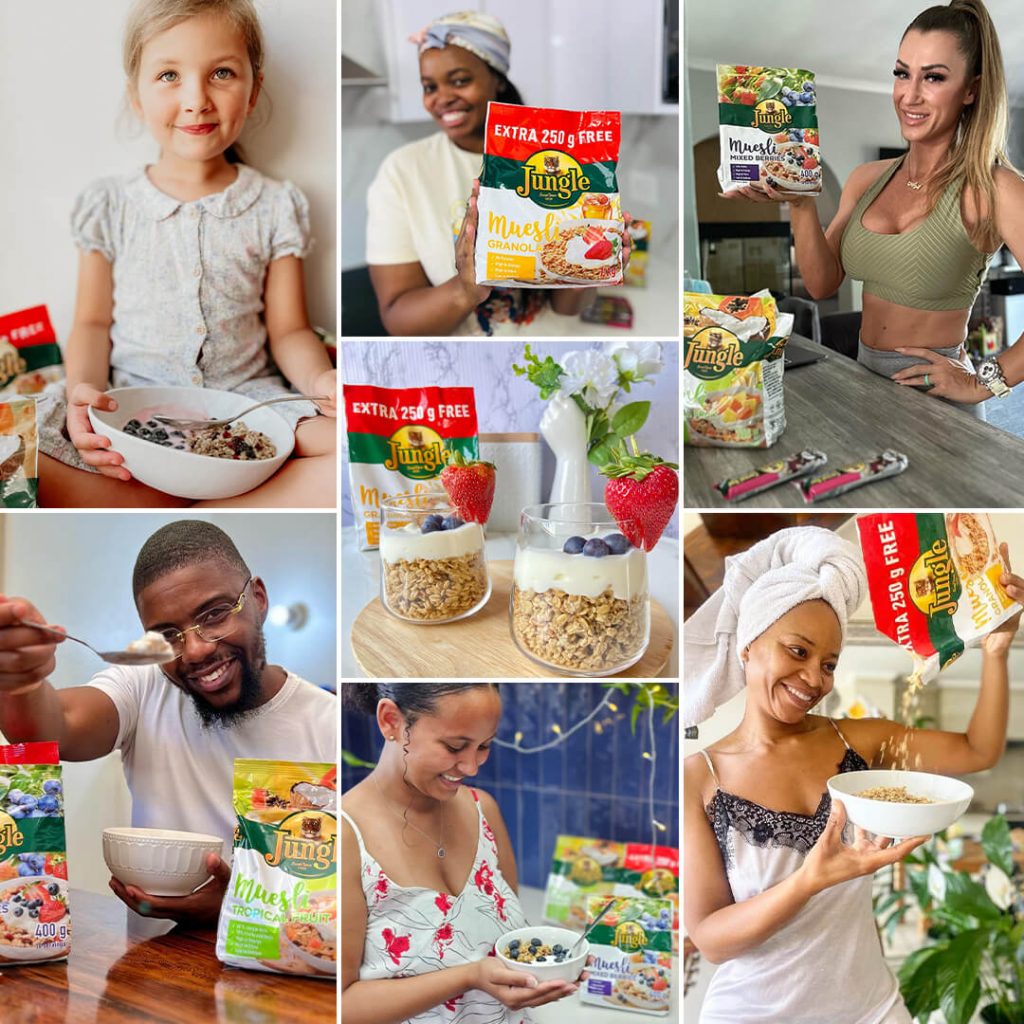
In the context of Influencer Marketing in South Africa, the diverse cultural landscape and social impact play significant roles in shaping the effectiveness and resonance of campaigns. By aligning with local traditions and promoting inclusivity, influencer campaigns can resonate more deeply with the South African audience and contribute to positive change.
Cultural Landscape:
Diversity and Multilingualism: South Africa is known for its rich cultural diversity and blend of ethnicities. For successful influencer campaigns it is important to be mindful of this diversity to ensure that content is inclusive and resonates with various cultural groups.
Cultural Sensitivity: Cultural sensitivity is crucial in crafting campaigns. Understanding and respecting cultural nuances, traditions, and sensitivities contribute to the success of influencer marketing efforts.
Local Traditions and Holidays: Campaigns can align with local traditions and holidays, creating content that reflects and celebrates South African culture. This can enhance relatability and authenticity.
Youth Culture: South Africa has a youthful population, and youth culture heavily influences trends and social media usage. Influencers who are relatable to the youth demographic can have a significant impact on campaigns.
Social Issues and Activism: Influencers are increasingly using their platforms to address social issues such as inequality, racism, and environmental concerns. Brands that align with influencers advocating for positive social change can contribute to a more impactful and socially conscious campaign.
Social Impact:
Representation and Diversity: Influencer marketing campaigns have the potential to contribute to positive social impact by promoting diversity and representation. Collaborating with influencers from different backgrounds can help amplify underrepresented voices.
Educational Content: Some influencers use their platforms to educate their audience on various subjects, from health and wellness to education and social issues. Campaigns that incorporate educational content can contribute to positive social impact.
Community Engagement: Influencers often have strong connections with their communities. Campaigns that encourage community engagement, such as local events, charitable initiatives, or social causes, can generate a positive social impact.
Mental Health Awareness: Influencers in South Africa, like in many other places, are increasingly addressing mental health issues. Campaigns that contribute to mental health awareness and destigmatization can have a positive societal impact.
Authentic Storytelling: Authenticity is crucial for social impact. Influencers who share personal stories, challenges, and triumphs can create a connection with their audience and contribute to a more authentic and impactful campaign.

What is a Nano Influencer?
A nano influencer is someone who has a small but highly engaged and loyal following on social media or other online platforms. The term “nano” refers to the relatively small size of their audience compared to micro and macro influencers. Nano influencers typically have follower counts in the range of a few hundred to a few thousand. Their focus is on niche interests, and a high degree of authenticity and their impact is often concentrated within specific communities, making them valuable collaborators for brands looking to connect with targeted audiences in a more personalized way.
What are the Key Characteristics of Nano Influencers?
-
Small Following: Nano influencers have a relatively small audience, often consisting of friends, family, and individuals who share similar interests. This smaller scale allows for more personalized and intimate interactions.
-
Niche Focus: Similar to micro-influencers, nano influencers often focus on specific niches or areas of interest. Their content tends to cater to a niche community, and they may have a deep understanding of their followers’ preferences.
-
High Engagement Rates: Nano influencers typically experience high engagement rates due to the close-knit nature of their communities. Followers may feel a stronger personal connection with nano influencers, leading to more meaningful interactions.
-
Authenticity: Authenticity is a hallmark of nano influencers. Their content often feels more genuine and relatable, and they may share personal experiences, recommendations, and insights with their audience.
-
Local or Community Influence: Nano influencers may have a local or community-based influence. Their reach may be concentrated in a specific geographic area or within a particular community of interest.
-
Cost-Effective Collaborations: Collaborating with nano influencers is usually more cost-effective for brands compared to working with micro or macro influencers. Nano influencers may be willing to collaborate in exchange for products or services.
-
Word-of-Mouth Impact: Nano influencers often have a strong word-of-mouth impact. Recommendations and endorsements from nano influencers can carry significant weight within their community, leading to increased trust and credibility.
-
DIY Content Production: Nano influencers may rely on do-it-yourself (DIY) content production, using smartphones and basic equipment to create their posts. While the production may be less polished, it contributes to the authentic and relatable nature of their content.
-
Building Personal Relationships: Nano influencers often focus on building personal relationships with their followers. They may respond to comments, direct messages, and actively engage with their audience on a more individual level.
-
Rising Popularity: Nano influencers are gaining popularity in influencer marketing strategies. Brands are recognizing the value of their authenticity, high engagement rates, and cost-effectiveness in reaching niche audiences.

What is a Micro Influencer?
A micro-influencer is an individual who has a relatively small but highly engaged and loyal following on social media or other online platforms. They focus on a specific niche and often have a more personal and authentic connection with their followers. Their authenticity, high engagement rates, and cost-effectiveness make them attractive collaborators for brands looking to connect with targeted audiences.
What are the Key Characteristics of Micro-Influencers?
Smaller Following: Micro-influencers usually have a follower count ranging from a few thousand to around 100,000. The specific number can vary, but the key distinction is that it is smaller compared to macro-influencers.
Niche Focus: Micro-influencers often specialize in a particular niche or industry, such as fashion, beauty, fitness, travel, or technology. Their content is targeted towards a specific audience interested in that niche.
High Engagement Rates: One of the defining features of micro-influencers is their high engagement rates. Because of their smaller audience, they can interact more personally with their followers, responding to comments and building a community.
Authenticity: Micro-influencers are known for their authenticity. Their content often feels more genuine and relatable, as they may share personal experiences and recommendations with their audience.
Local Influence: Many micro-influencers have a local or regional focus. They may have a strong influence within a specific community or geographic location, making them particularly effective for localized marketing efforts.
Higher Conversion Rates: Despite having a smaller audience, micro-influencers often experience higher conversion rates. Their recommendations and endorsements are perceived as more trustworthy, leading to increased engagement and action from their followers.
Building Relationships: Micro-influencers tend to focus on building genuine relationships with their followers. This approach can lead to a strong sense of community and loyalty among their audience.
Diverse Perspectives: The world of micro-influencers is diverse, with individuals from various backgrounds and walks of life. This diversity allows brands to reach different segments of their target audience.
Rising Popularity: As the influencer marketing landscape evolves, micro-influencers are gaining popularity among brands. Their ability to create niche-specific content and foster genuine connections makes them valuable assets for marketing campaigns.

What is a Macro Influencer?
A macro-influencer is an individual with a significant and expansive following on social media or other online platforms. They typically have a larger reach with a broad appeal, higher-profile status and often extend into the hundreds of thousands or even millions of followers. They play a significant role in influencer marketing due to their ability to reach large audiences and impact trends, making them attractive collaborators for brands with broader marketing objectives.
What are the Key Characteristics of Macro-Influencers?
Large Following: Macro-influencers have a substantial following, often ranging from hundreds of thousands to millions of followers. This wide reach allows them to impact a broad and diverse audience.
Wide Reach Across Platforms: Macro-influencers may have a presence on multiple social media platforms, including Instagram, X, YouTube, Facebook, and others. Their content can reach audiences across various channels.
Celebrity or Public Figure Status: Some macro-influencers are celebrities or public figures outside of their online presence. They might be actors, musicians, athletes, or individuals known for their expertise in a particular field.
General Appeal: Unlike micro-influencers, who often focus on specific niches, macro-influencers often have a broader appeal. Their content may cover a wide range of topics, attracting a diverse audience.
Brand Collaborations and Sponsorships: Macro-influencers are sought after by brands for collaborations and sponsorships due to their extensive reach. They often engage in partnerships with major brands for promotional campaigns.
Professional Content Production: Macro-influencers often invest in professional content production. This can include high-quality photos, professionally edited videos, and well-curated posts, contributing to a polished online presence.
Potential for Global Impact: Macro-influencers have the potential for global impact. Their reach extends beyond local or regional boundaries, allowing brands to target a wide and diverse international audience.
Influence on Trends: Macro-influencers, due to their large following, have the ability to influence trends and shape popular culture. Their endorsements or preferences can impact the purchasing decisions of a significant number of people.
Less Personal Engagement: Given the scale of their following, macro-influencers may have less personal engagement with individual followers compared to micro-influencers. Interaction tends to be more generalized.
SOURCES
https://sproutsocial.com/insights/microinfluencer-marketing/
https://www.cmswire.com/digital-marketing/social-media-influencers-mega-macro-micro-or-nano/
https://business.localfluence.com/7-qualities-of-a-good-influencer/
https://blog.hubspot.com/marketing/how-to-become-an-influencer-in-10-steps
https://www.coursera.org/articles/how-to-become-an-influencer
https://sproutsocial.com/insights/microinfluencer-marketing/
